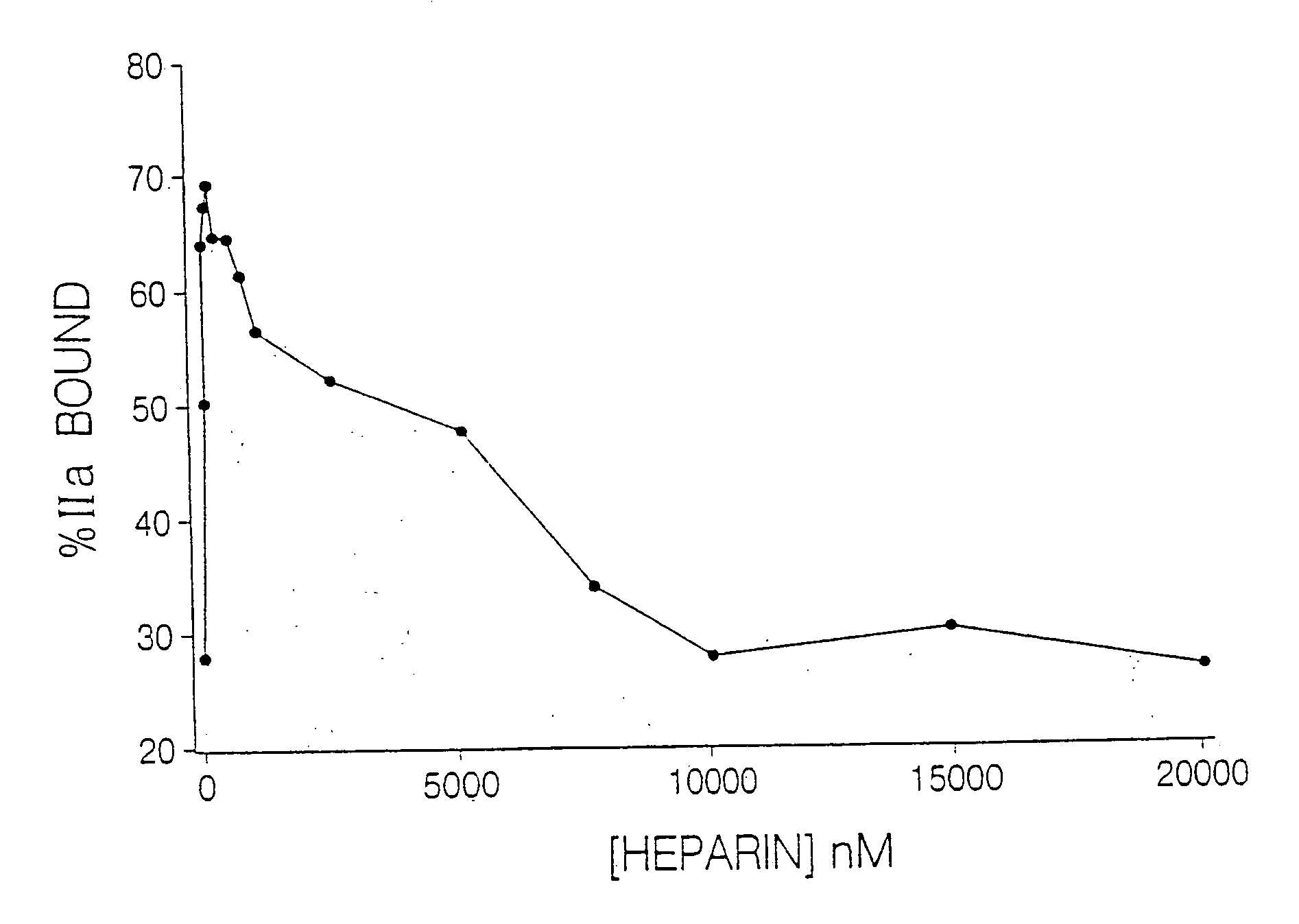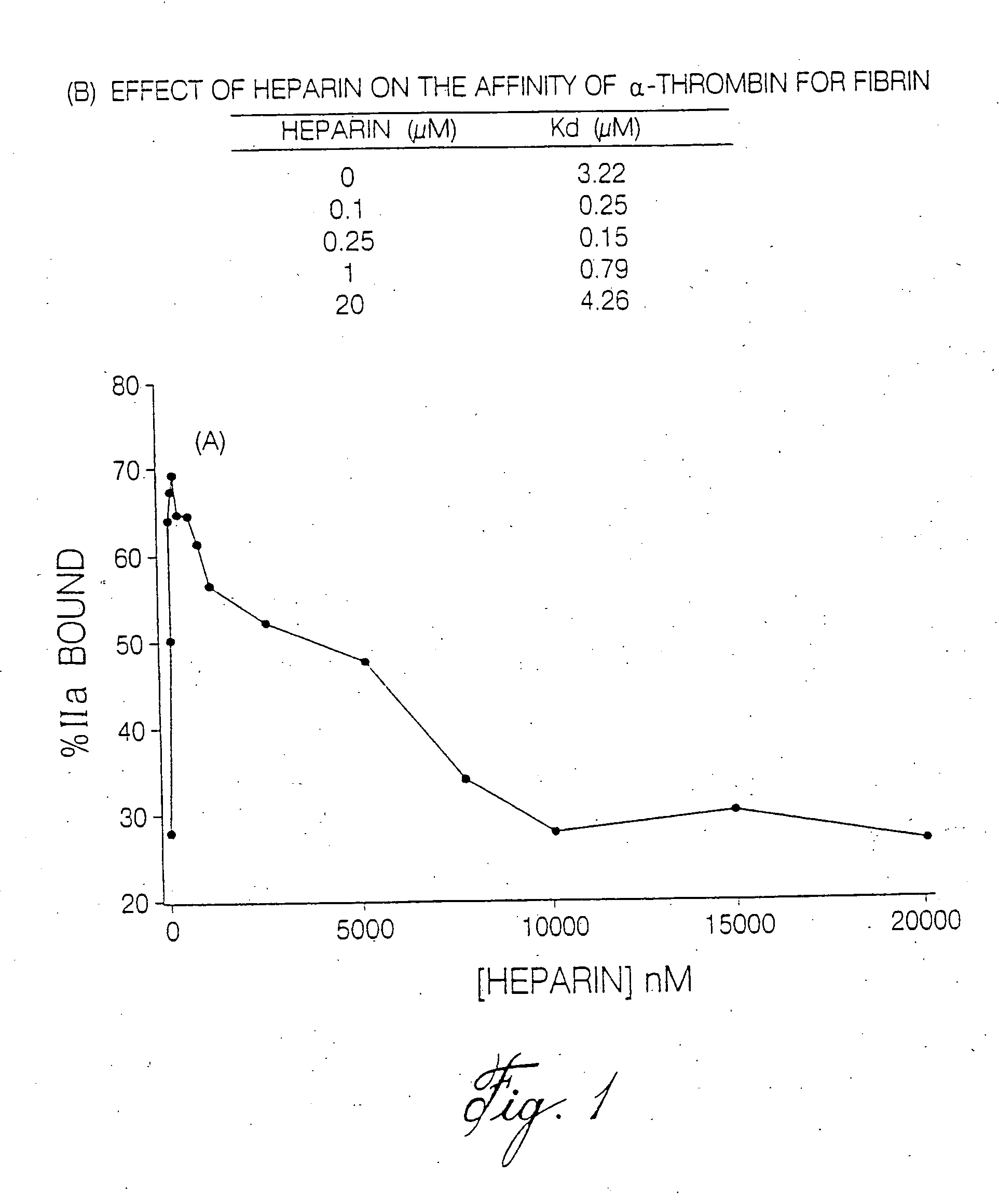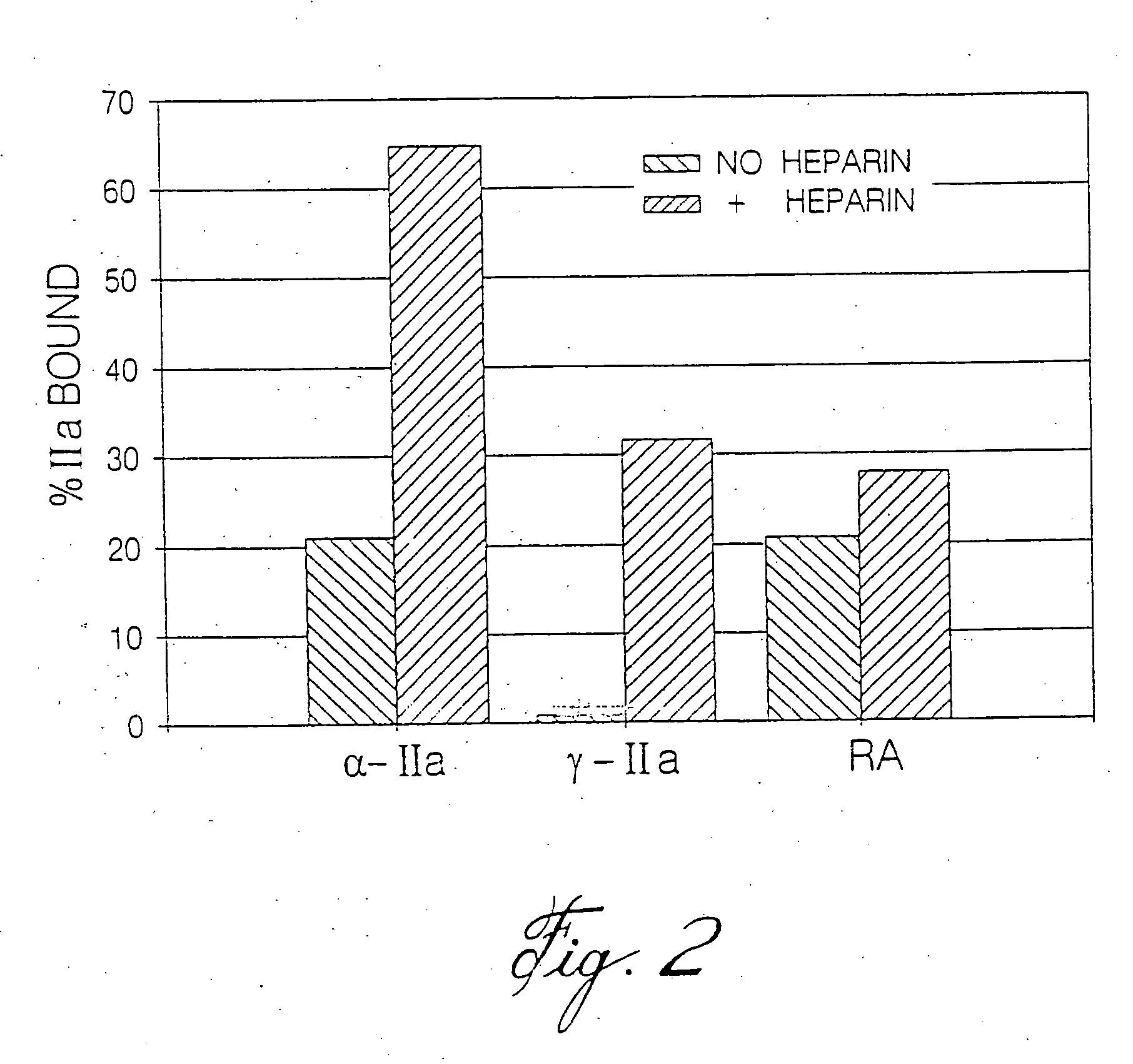Heparin compositions that inhibit clot associated coagulation factors
a technology of coagulation factors and compositions, applied in drug compositions, cardiovascular disorders, extracellular fluid disorders, etc., can solve the problems of too short bridge between antithrombin and thrombin, and achieve the effect of inhibiting thrombin generation
- Summary
- Abstract
- Description
- Claims
- Application Information
AI Technical Summary
Benefits of technology
Problems solved by technology
Method used
Image
Examples
example 1
[0105]Experimental Findings
1.1 Clinical Limitations of Currently Available Anticoagulants
[0106]Heparin, LMWH and direct thrombin inhibitors have limitations in acute coronary syndromes. In patients with unstable angina, there is a clustering of recurrent ischemic events after treatment with these agents is stopped (Theroux, P., et al. (1992) N. Engl. J. Med. 327:141-145; Granger, C. B., et al. (1996) Circulation 93:870-888; Oldgren, J., et al. (1996) Circulation 94 (suppl 1):I-431). This is due to reactivation of coagulation because there is an associated elevation in plasma levels of prothrombin fragments F1.2 (F1.2) and fibrinopeptide A (FPA), reflecting increased thrombin generation and thrombin activity, respectively (Granger, C. B., et al. (1995) Circulation 91:1929-1935). In patients with acute myocardial infarction, thrombolytic therapy with tissue plasminogen activator (t-PA) or streptokinase induces a procoagulant state characterized by elevated levels of FPA (Eisenberg, P....
example 2
2.0 Development of Medium Molecular Weight Heparin:
[0119]To catalyze thrombin inhibition, heparin bridges antithrombin to thrombin (Daneilsson, A., et al. (1986) J. Biol. Chem. 261:15467-15473). Provision of this bridging function requires heparin chains with a minimal molecular weight of 5,400 (Jordan, R. E., et al. (1980) J. Biol. Chem. 255:10081-10090). Because the majority of LMWH molecules are J. Biol. Chem. 255:10081-10090). Since heparin bridges thrombin to fibrin to form the ternary fibrin-thrombin-heparin complex, it was hypothesized that this function also requires heparin chains of minimum molecular mass. Further, it was postulated that if this minimum molecular mass is different from that needed to bridge antithrombin to thrombin, there may be a window wherein the heparin chains are too short to bridge thrombin to fibrin, but are of sufficient length to bridge antithrombin to thrombin, thereby overcoming an important mechanism of heparin resistance.
[0120]It has now been ...
example 3
Comparison of the Efficacy and Safety of the MMWH Compositions of the Present Invention with other known Anticoagulants
[0123]This example illustrates a study comparing the efficacy and safety of a MMWH composition of the present invention, which is denoted in the figures as V21, LMWH, heparin and hirudin in a the rabbit arterial thrombosis prevention model. The results indicate that the MMWH compositions of the present invention are more effective than LMWH and heparin and safer than hirudin. The arterial thrombosis prevention model was modified so that both efficacy and safety could be assessed in the same animal. Efficacy was assessed by measuring flow over 90 minutes distal to a 95% stenosis in an injured rabbit aorta, and safety was assessed by measuring blood loss over 30 minutes using the rabbit ear model. The four compounds were compared at three dosage levels. Each compound was administered as a bolus and infusion for 90 minutes. The doses listed in the following figures rep...
PUM
| Property | Measurement | Unit |
|---|---|---|
| molecular weights | aaaaa | aaaaa |
| molecular weights | aaaaa | aaaaa |
| molecular weights | aaaaa | aaaaa |
Abstract
Description
Claims
Application Information
 Login to View More
Login to View More - R&D
- Intellectual Property
- Life Sciences
- Materials
- Tech Scout
- Unparalleled Data Quality
- Higher Quality Content
- 60% Fewer Hallucinations
Browse by: Latest US Patents, China's latest patents, Technical Efficacy Thesaurus, Application Domain, Technology Topic, Popular Technical Reports.
© 2025 PatSnap. All rights reserved.Legal|Privacy policy|Modern Slavery Act Transparency Statement|Sitemap|About US| Contact US: help@patsnap.com



